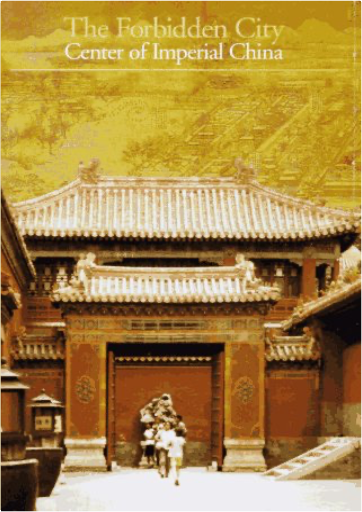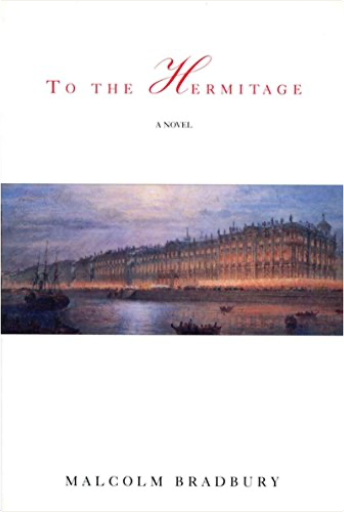 To the HermitageMalcolm Bradbury To the HermitageMalcolm Bradbury In alternating narratives, Bradbury brilliantly recreates the climate of the eighteenth century―as Diderot journeys to Russia at the behest of Catherine the Great for discussions on the nature of the late-18th-century world, as well as the twentieth century academic milieu.In October 1993, a novelist is invited to go to Stockholm and Russia to take part in what is enigmatically referred to as the Diderot Project. In Stockholm he is joined by various other members of the project―including an academic, a lustful opera singer, and a Swedish diplomat. On the journey to Russia more is revealed about the great Enlightenment writer Denis Diderot―the son of a knife maker in Langres, who went to Paris and compiled the Encyclopedia, a book that changed the world. 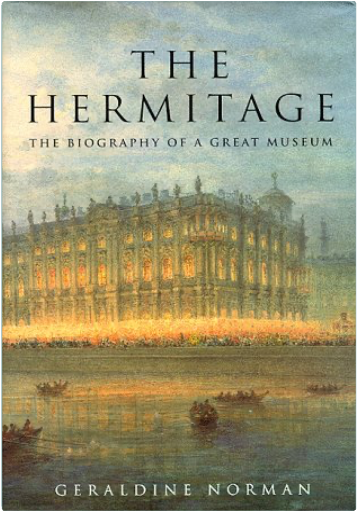 The Hermitage: The Biography of a Great MuseumGeraldine Norman The Hermitage: The Biography of a Great MuseumGeraldine Norman Possibly the greatest museum in the world, the Hermitage Museum in St. Petersburg, Russia, began as a showcase for the legendary art treasures of the czars. This exciting history tells how imperial romance and marriage, murder, war, revolution, and international politics shaped the fabled collection over the centuries, until it filled the Winter Palace and three riverside pavilions with priceless art from antiquity to the modern day. 25 color photos. b&w photos. 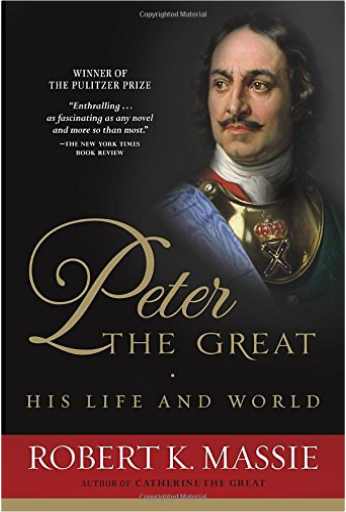 Peter the Great: His Life and WorldRobert K. Massie Peter the Great: His Life and WorldRobert K. Massie Winner of the Pulitzer Prize
Against the monumental canvas of seventeenth- and eighteenth-century Europe and Russia unfolds the magnificent story of Peter the Great, crowned co-tsar at the age of ten. Robert K. Massie delves deep into the life of this captivating historical figure, chronicling the pivotal events that shaped a boy into a legend—including his “incognito” travels in Europe, his unquenchable curiosity about Western ways, his obsession with the sea and establishment of the stupendous Russian navy, his creation of an unbeatable army, his transformation of Russia, and his relationships with those he loved most: Catherine, the robust yet gentle peasant, his loving mistress, wife, and successor; and Menshikov, the charming, bold, unscrupulous prince who rose to wealth and power through Peter’s friendship. Impetuous and stubborn, generous and cruel, tender and unforgiving, a man of enormous energy and complexity, Peter the Great is brought fully to life. 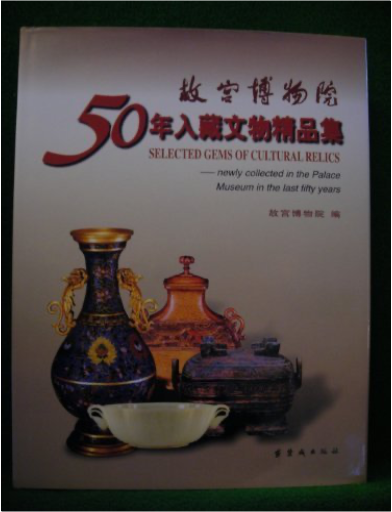 National Palace Museum Collection of 50 years, Tibet Cultural RelicsABC National Palace Museum Collection of 50 years, Tibet Cultural RelicsABC In the editing process, we received the Department of ancient artifacts, ancient calligraphy and painting Department, Royal support. Information center copied all the pictures. Exhibition Education Department had access to a large number of original archive materials and did a lot of preparation and editing work, showing 50 years of achievement of the National Palace Museum Antiquities Collections. 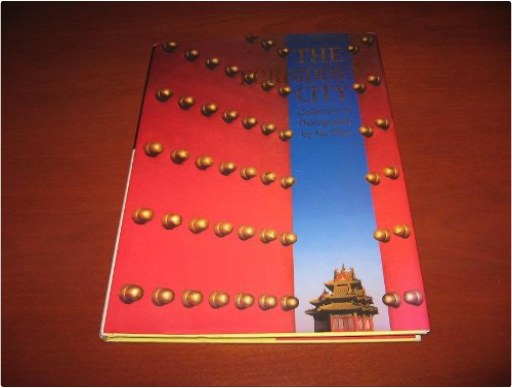 The Forbidden City: Collection of Photographs by Hu ChuiChui Hu The Forbidden City: Collection of Photographs by Hu ChuiChui Hu Hu Chui was born in 1952 into a scholarly family in Shanghai, China and has had a keen interest in photography since childhood. In 1969, he was sent to the countryside, where he spent a number of years working as a farmer and manual laborer. During that time, Hu Chui continued with his avid pursuit of photographic art, learning theories and techniques on his own.
In 1978 Hu Chui joined the Palace Museum as a photographer. He later took charge of the Museum's photography studio in 1985. Throughout his career Hu Chui has tirelessly researched and experimented with ways to apply photography - an "imported" and relatively new art form - to the architecture and relics that represent China's ancient civilization. His aim is to break away from the staid approarch typically used in the past to photograph such monuments and art objects. In doing so, Hu Chui strives to inspire the viewer a simultaneous appreciation for the beauty of the objects themselves, and for the artistic medium he uses to capture these images.
Hu Chui's works have been published in numerous books and catalogues. This volume is a compilation of some of his best works of the Forbidden City, capturing the spirit of its monumental architecture and stunning interiors. 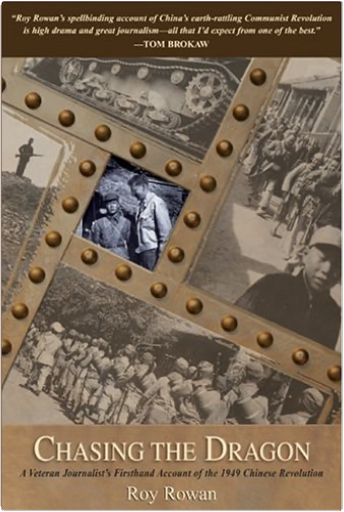 Chasing the Dragon: A Veteran Journalist's Firsthand Account of the 1949 Chinese RevolutionRoy Rowan Chasing the Dragon: A Veteran Journalist's Firsthand Account of the 1949 Chinese RevolutionRoy Rowan In 1949 the Soviet Union detonated its first atomic bomb, and eastern Europe had arranged itself into a constellation of communist satellite states, when China-the world's most populous nation—succumbed to what seemed to be an insurmountable tide of communist successes. Dumbfounded, America wanted to know, "Who lost China?"
Roy Rowan was one of only two living Western journalists who covered the fall of China, and in Chasing the Dragon, he recounts his personal experiences during one of modern history's most tumultuous and significant events. Writing for Life magazine from such datelines as Nanjing, Shanghai, Beijing, Shenyang, Taiyuan, and China's Gettysburg-Xuzhou-he watched the horror and spectacle of the world's oldest continuous civilization tear itself apart as Chairman Mao Zedong's ragtag army saturated the Chinese countryside, choked off major industrial cities, and waited for them to "fall like ripe melons." With the fall of each city, Rowan had to plan an emergency evacuation by whatever means possible.
Through Rowan's personal interviews and experiences we meet colorful characters such as "Big Ears Tu," the crime boss of Shanghai's infamous Green Gang; "the Generalissimo" and his wife Madame Chiang Kai-shek, whose
dulcet tones of flawless Wellesley English belied her cool ruthlessness; the irrepressible Claire Chennault of "Flying Tiger" fame; and a personal acquaintance with Zhouenlai, who would become China's premier under Mao Zedong.
In the decades since, Rowan has traveled back to each battlefield, and has covered China for Time, Life, and Fortune. Chasing the Dragon is his fascinating firsthand account of an event that still continues to shape our world. 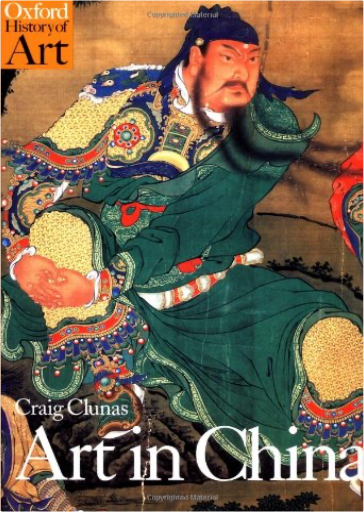 Art in ChinaCraig Clunas Art in ChinaCraig Clunas About the Oxford History of Art Series:
"An impressively challenging and ambitious series intended to rewrite no less than the whole history of art in terms of new ideas and new scholarship."—Christopher White, Director of the Ashmolean Museum, Oxford
"A welcome introduction to art history for the twenty-first century....The best of the past and future."—Robert Rosenblum, New York University
The last twenty years have witnessed profound changes in art history, the greatest of which stem from the social and cultural perspectives now attached to art scholarship. Written by scholars at the forefront of new thinking, many of whom are rising stars in their fields, the Oxford History of Art series offers substantial and innovative texts that clarify, illuminate, and debate the critical issues at the heart of art history today. Providing a fresh new look at art that moves away from traditional elitist approaches, the series makes use of new research and methodologies, as well as newly accessible and non-canonical works to offer comprehensive coverage of the art world from archaic and classical Greek art to twentieth-century design and photography, from the artistry of African-American and Native North Americans to the masterpieces of Europe, Polynesia, and Micronesia. Lavishly illustrated and superbly designed, the Oxford History of Art brings new substance and verve to the exciting and ubiquitous world of art.
China boasts a history of art spanning 5,000 years and embracing a wide diversity of images and objects—from jade tablets, painted silk handscrolls and fans to ink and lacquer painting, porcelain-ware, sculpture, and calligraphy. But this rich tradition has not, until now, been fully appreciated in the West where scholars have focused their attention on sculpture, while largely ignoring those art forms most highly prized by the Chinese themselves, such as calligraphy. Now, in Art in China, Craig Clunas marks a breakthrough in the study of the subject. Taking into account all the arts practiced in China, and drawing on recent innovative scholarship, this rich text examines the production and consumption of art in its appropriate contexts. From art found in tombs to the state-controlled art of the Mao Zedong era, Art in China offers a novel look and comprehensive examination of all aspects of Chinese art. 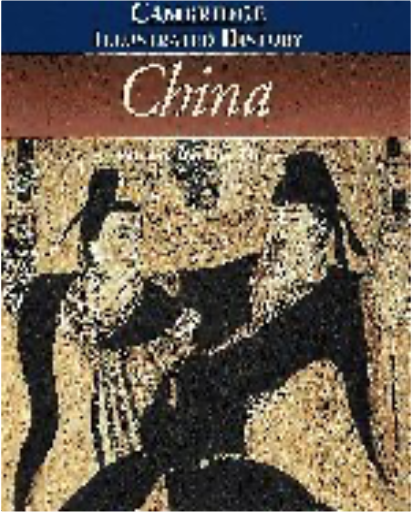 The Cambridge Illustrated History of ChinaPatricia Buckley Ebrey The Cambridge Illustrated History of ChinaPatricia Buckley Ebrey An engaging and fully illustrated account of more than 8000 years of Chinese civilization - from prehistoric times through to the modern communist state. Includes leading Chinese historians, poets, novelists, dramatists, philosophical and religious ideas, art forms and outside influences. 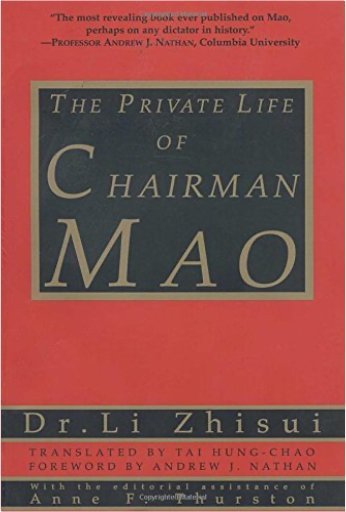 The Private Life of Chairman MaoLi Zhi-Sui, Li Zhisui The Private Life of Chairman MaoLi Zhi-Sui, Li Zhisui From 1954 until Mao Zedong's death 22 years later. Dr. Li Zhisui was the Chinese ruler's personal physician. For most of these years, Mao was in excellent health; thus he and the doctor had time to discuss political and personal matters. Dr. Li recorded many of these conversations in his diaries, as well as in his memory. In this book, Dr. Li vividly reconstructs his extraordinary time with Chairman Mao. of illustrations. |
 To the HermitageMalcolm Bradbury
To the HermitageMalcolm Bradbury  The Hermitage: The Biography of a Great MuseumGeraldine Norman
The Hermitage: The Biography of a Great MuseumGeraldine Norman  Peter the Great: His Life and WorldRobert K. Massie
Peter the Great: His Life and WorldRobert K. Massie 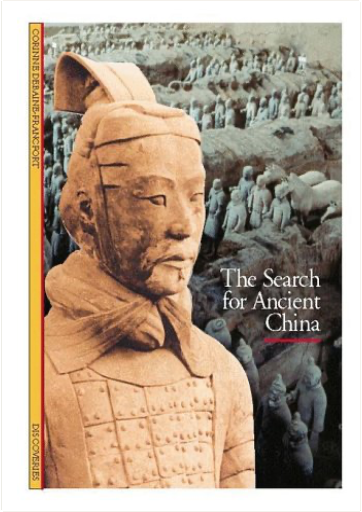 Discoveries: Search for Ancient China (Discoveries (Harry Abrams))Corinne Debaine-Francfort
Discoveries: Search for Ancient China (Discoveries (Harry Abrams))Corinne Debaine-Francfort  National Palace Museum Collection of 50 years, Tibet Cultural RelicsABC
National Palace Museum Collection of 50 years, Tibet Cultural RelicsABC 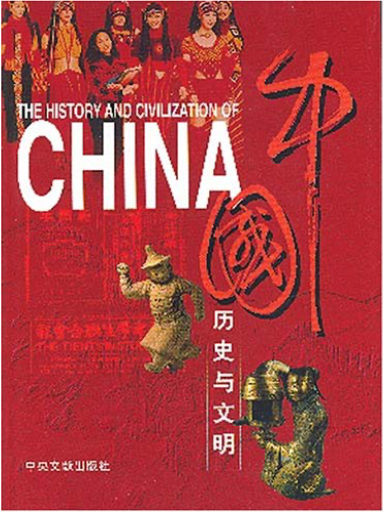 The History and Civilization of ChinaZhang Yingpin.Fan Wei Edited By
The History and Civilization of ChinaZhang Yingpin.Fan Wei Edited By  The Forbidden City: Collection of Photographs by Hu ChuiChui Hu
The Forbidden City: Collection of Photographs by Hu ChuiChui Hu  Chasing the Dragon: A Veteran Journalist's Firsthand Account of the 1949 Chinese RevolutionRoy Rowan
Chasing the Dragon: A Veteran Journalist's Firsthand Account of the 1949 Chinese RevolutionRoy Rowan  Art in ChinaCraig Clunas
Art in ChinaCraig Clunas  The Cambridge Illustrated History of ChinaPatricia Buckley Ebrey
The Cambridge Illustrated History of ChinaPatricia Buckley Ebrey  The Private Life of Chairman MaoLi Zhi-Sui, Li Zhisui
The Private Life of Chairman MaoLi Zhi-Sui, Li Zhisui  Made with Delicious Library
Made with Delicious Library
